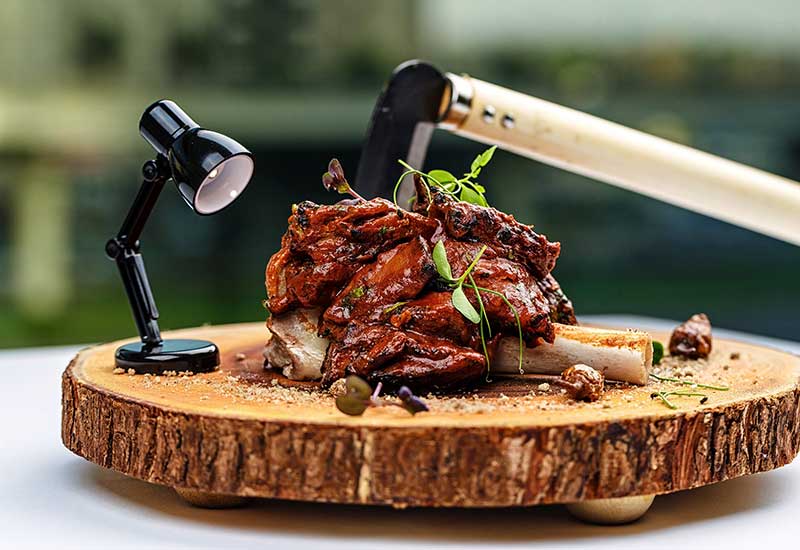How popular is Indian cuisine in this region?
Faizan Ali, head chef, Khyber: Indian cuisine is incredibly popular in this region. This is largely down to the vast number of expatriates from India living and working here, who wish to explore the flavours of true Indian cuisine. It's also due to the similarities between Indian and Middle Eastern tastes.
Jitin Joshi, executive chef, Bombay Brasserie: It’s extremely popular because of the proximity to the sub-continent, and the history — the trade routes amalgamated the use of spices in the Middle East.
Amrish Sood, chef de cuisine, Rang Mahal by Atul Kochhar: India shares a strong bond with this region, which is based on age-old cultural ties and trade. This lays a strong foundation for Indian cuisine locally, and in many ways it has become a staple for people here. The strong Indian community in the region has also increased the cuisine’s popularity.
Pankaj Kumar, brand chef, Shamiana: The Indian population in the region is significant, so the cuisine, by default, is a very popular one. Nevertheless, we find that our customers are a mix of Indians, locals, and westerners, all of whom love the food because it appeals to many taste preferences — from vegetarians to meat lovers, and those liking meals full of flavour or spicier dishes with a kick. It is a diverse cuisine, and its use of spices makes it different from other types of cuisine.
Himanshu Saini, executive chef, Tresind and Carnival by Tresind: Indian cuisine has become a global phenomenon. There are many cooking techniques and ingredients that are shared by Middle Eastern countries and India. Spice Route traders from Middle Eastern countries often settled in India, and you can therefore see the similarities between the foods and cultures. This is one of the key reasons that Indian cuisine is so popular in this region.
Pallav Patel, owner and director, Bombay Bungalow: Indian cuisine has become quite popular recently, in this region as well as globally. The region has a great appetite for new Indian offerings, and according to a 2016 report by KPMG, Indian cuisine is the most popular in the region.
Have you noticed any trends in Indian cuisine?
Ali: There are a few places that are approaching Indian cuisine with modern ideas. We at Khyber Dubai, however, believe in keeping the flavours and tastes traditional — some things should be kept as they have always been. We feel this brings out the classical north Indian flavours.
Joshi: The most recent trends in this part of the world are creativity, molecular gastronomy, and theatrical dining experiences. In general, people are looking for familiar tastes delivered in a new way. Local, home-grown restaurants that specialise in one particular dish are also now emerging. Also, in the digital world, ‘Insta-worthiness’ has become a parameter that needs to be fulfilled when designing dishes, concepts, and venues.
Sood: I think that the focus is starting to be more on ethnic and comfort food, and many chefs are taking steps to discover new dishes from smaller communities. Also, some of the old, classical dishes are appearing on menus, but presented in a more elegant way.
Kumar: Vegan and vegetarian Indian food is becoming more popular, because people are now changing their diets to be healthier and meat-free. They opt for dishes with less meat, and substitute chickpeas or lentils instead, for example.
Saini: Lots of new Indian chefs are reviving old recipes from different parts of India, and they are emphasising vegetarian and vegan aspects of the cuisine.
Patel: The region takes its cue from many of the more mature markets, so we can see that Indian cuisine is starting to get much more experimental, progressive, and accessible, which is something our brand has taken into serious consideration during its re-launch.

| Advertisement |









 Search our database of more than 2,700 industry companies
Search our database of more than 2,700 industry companies









